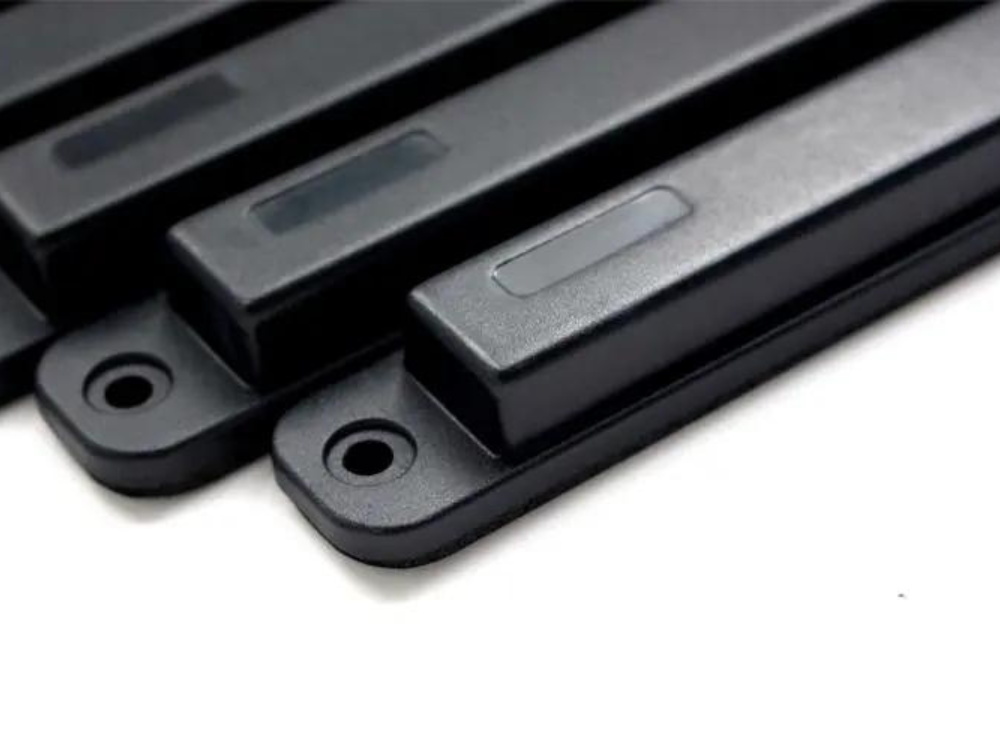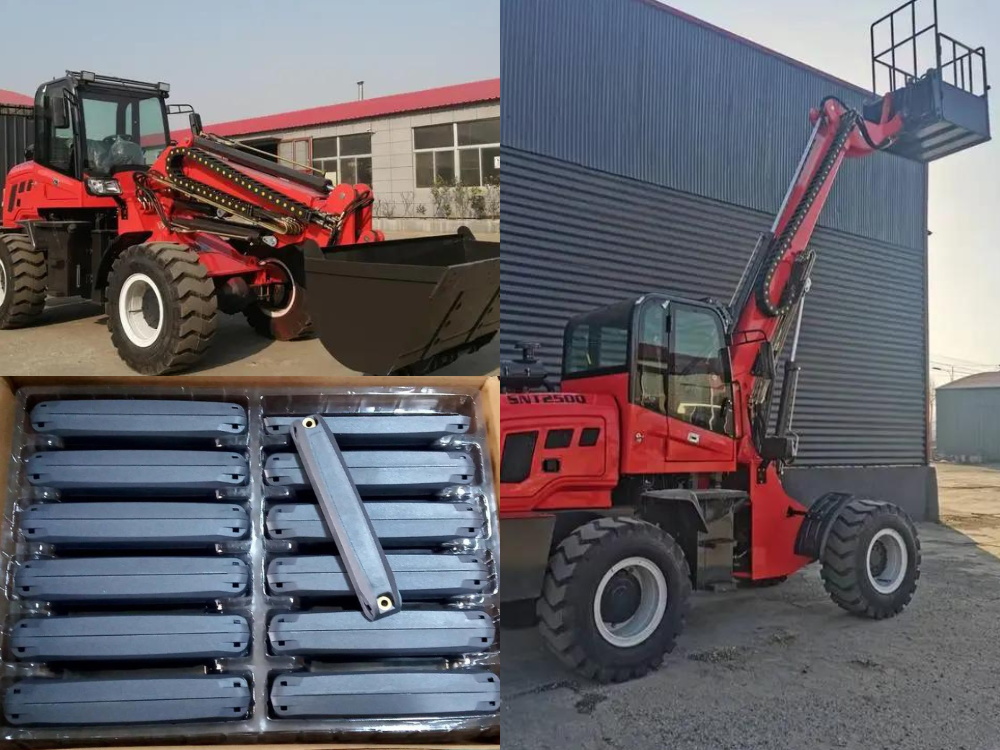
Telescopic Handler Technology: Enhancing Safety with RFID Automation
Table of Contents
Summary
With various attachments and weights involved, the need for precise control is critical. To address this, Magni integrates RFID technology and weight sensors into its equipment, automating safety decisions and providing real-time data to operators.

Magni's Technological Advancements
Magni, an Italian-based global company, has positioned itself as a leader in telescopic handler technology. Founded in 2013 by Ricardo Mani, the company has grown significantly, with a revenue exceeding half a billion euros last year. Magni’s equipment, equipped with advanced onboard technologies, is used in a variety of demanding environments, including bridge maintenance, large-scale construction projects, and mining operations.
Magni Telescopic Handlers – Key Features
Feature | Description |
Weight Range | 6,600 lbs to 110,200 lbs |
Combi Touch Machine Management | Provides real-time digital data to operators |
Live Load Diagrams | Displays weight, height, and extension limits |
RFID Technology | Automates attachment identification and safety |
The Role of RFID in Safety Automation
Magni’s implementation of RFID technology is a significant differentiator in the market. The RFID system simplifies the process of identifying attachments and their specifications. Each attachment is equipped with a passive RFID tag, which is read by a device located in the handler’s boom. This ensures that the correct parameters for lifting and handling are automatically set, reducing the risk of operator error.
How RFID Enhances Operation
- Attachment Identification: RFID tags welded to each attachment are read by the handler’s boom, enabling the system to recognize the attachment and its capabilities.
- Weight Sensing: Integrated weight sensors capture the load’s weight, linking it to the specific attachment’s ID.
- Operational Safety: The system displays safe operating parameters, such as boom reach and height limits, on the cabin’s touch screen.
Case Study: Magni RTH 10.37 Telehandler
The Magni RTH 10.37 is a rotating telehandler equipped with a telescopic forklift and crane, capable of lifting goods over 100 feet. This model leverages both RFID technology and weight sensors, providing operators with critical data to ensure safe and effective operations.
Magni RTH 10.37 – Specifications
Specification | Details |
Maximum Lifting Height | 100 feet |
Attachments | Telescopic forklift, crane, various lifting tools |
Safety Features | RFID-enabled attachment recognition, weight sensors |
Robust and Reliable Technology
The RFID tags and readers are designed to withstand harsh environments, including wet and dirty conditions often encountered on construction sites. If a tag becomes damaged, Magni offers a replacement service, programming new tags to match the specific attachment requirements.
Integration with Telehandler Management
Magni also provides a telehandler management app that tracks the machine’s location and usage via GPS and GPRS. This data helps monitor the equipment’s performance, although it does not track individual attachment usage.

Conclusion
Magni’s integration of RFID technology into its telescopic handlers revolutionizes safety and efficiency in heavy equipment operations. By automating critical decisions, operators can focus on their tasks with confidence, knowing that the system is continuously optimizing for safety. As construction and mining environments become increasingly complex, such innovations are essential for maintaining operational integrity and minimizing risk.
Comments
Hot Products

What Is RFID Waste Management
Imagine a city where every trash bin speaks — not literally — but through a tiny chip that tells the system when it’s full, when it’s emptied, and where it went. That’s what RFID waste management is doing today.

What are Bolt Seals and their Applications? | Complete Guide
In global trade and logistics, bolt seals play a crucial role in ensuring cargo security and compliance. These small but powerful devices are designed to lock shipping containers, trailers, and cargo doors with a tamper-evident mechanism.

What is an RFID Card Protector? Benefits, Use Cases, and Buying Guide
RFID technology (Radio Frequency Identification) is everywhere: in your credit cards, ID badges, transit passes, hotel room keys, and more. It offers speed and convenience, but it also opens the door to a new kind of digital theft called “skimming.” That’s where an RFID card protector comes in.

RFID Wristbands for Events: Bulk Buying Guide for Organizers
RFID wristbands for events are becoming the go-to solution for organizers who need faster entry, fraud prevention, and cashless payments at concerts, festivals, and sports venues. Unlike paper tickets or QR codes, these smart wristbands use embedded chips to streamline access, secure transactions, and improve the guest experience.

How RFID Tag on Windscreen Improves Vehicle Access Control and Toll Systems
In today’s fast-paced world, vehicle identification needs to be quick, secure, and contactless. An RFID Tag on the Windscreen provides exactly that — a reliable way to manage toll collection, parking, and gated access without stopping vehicles.

The Benefits of RFID Linen Tags in Commercial Laundry
Managing laundry in hospitals, hotels, or large laundry services is a big job. Each day, thousands of sheets, towels, and uniforms are washed, sorted, and sent back out. But problems like lost linens, sorting mistakes, and manual counting can cost companies a lot of money. For example, mid-sized hotels can lose over $200,000 each year from missing linens.
That’s where RFID Linen Tags come in.
Tags
RELATED BLOGS

What Is RFID Waste Management
Imagine a city where every trash bin speaks — not literally — but through a tiny chip that tells the system when it’s full, when it’s emptied, and where it went. That’s what RFID waste management is doing today.

What are Bolt Seals and their Applications? | Complete Guide
In global trade and logistics, bolt seals play a crucial role in ensuring cargo security and compliance. These small but powerful devices are designed to lock shipping containers, trailers, and cargo doors with a tamper-evident mechanism.

What is an RFID Card Protector? Benefits, Use Cases, and Buying Guide
RFID technology (Radio Frequency Identification) is everywhere: in your credit cards, ID badges, transit passes, hotel room keys, and more. It offers speed and convenience, but it also opens the door to a new kind of digital theft called “skimming.” That’s where an RFID card protector comes in.




